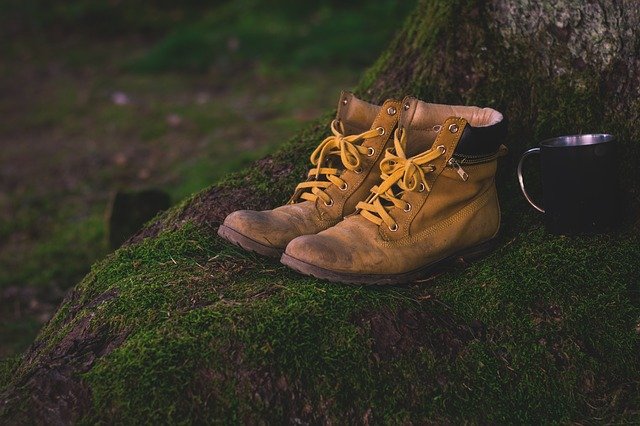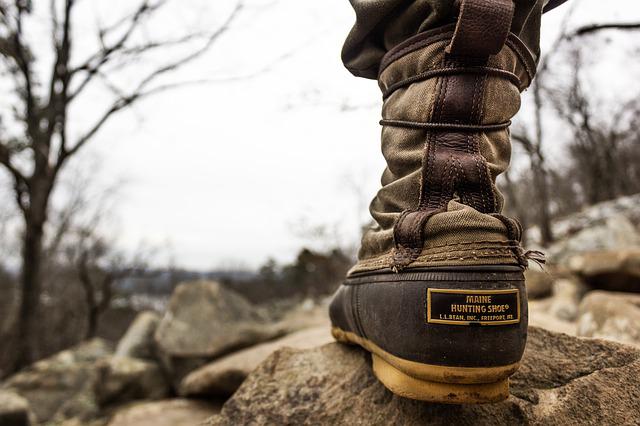Do you need your first set of hiking boots? Do your old shoes’ soles have worn-out treads? Here is our suggestion to assist you in picking the ideal combination. Blisters on your heels and painful feet aren’t often associated with hiking boots. You can elevate your head and take in the scenery if you have the appropriate footwear! This article assists you in determining the standards that are most significant to you, allowing you to how to choose hiking shoes.
Table of Contents
How To Choose Hiking Shoes?
Most likely the most crucial piece of gear you’ll ever purchase is your hiking boots. Depending on your objectives, you must make the best decision. Many activities, including approaches, speed hiking, and simple day hikes, are best performed in lightweight, low-cut footwear. It makes sense to wear something with more support, like a mid-cut or high-cut boot, when carrying a heavier pack over unsteady ground. In particular, if you intend to climb via ferratas, performance on technical terrain is something to take into account. You need boots or shoes for the mountains that will keep your feet protected and comfortable over long distances. They must also be strong, waterproof, and light. Generally speaking, we advise choosing the lightest, most comfortable shoes you can find with the necessary support and stability for the type of hiking or trekking you intend to do and the terrain you’ll be walking on. Most importantly, no matter which choice you make, your shoes must fit you perfectly.
Why Do People Wear Hiking Boots?
Take into account your hiking expertise and level of fitness. Take note of the durability of your feet and ankles. How important are foot support and ankle stability to you? Concerned about a previous injury or an ankle twist? Then, seek out a boot that is more supportive and stable. Trekking boots offer better ankle and foot protection on rocky, uneven trails. They frequently have a stiffer insole (which should not be mistaken for the footbed) and tend to be mid- or high-cut. Additionally, the higher uppers help keep your feet dry in mud, rain, or slush, and most of them have thicker, more protective soles so you won’t feel rocks underfoot.
Types Of Hiking Shoes
Trail Runners
Despite having aggressive tread patterns, more support, heel brakes, and a stiffer midsole than running shoes, trail runners are similar to those shoes. A hiker can move quickly in these ultralight shoes. They are excellent for longer distances as well because you won’t get blisters or experience pain after wearing them for a while. Trail runners are comfortable and adaptable shoes that are great for trail running, ultralight backpacking, and day hikes. The disadvantage of trail runners is that they typically aren’t as stiff or durable as other shoes and won’t offer as good weather protection.
Light Hikers
Select a light hiker if you want more safety, stability, and durability than a trail runner. This type of hiking shoe provides superior traction, a stiff sole, and stability in a lightweight, low-profile package that is more robust and stable than a trail runner on technical terrain. If you want more traction and durability without the weight and bulk of a traditional hiking or backpacking boot, these shoes are fantastic. On a variety of surfaces, you can achieve excellent traction by using a tread pattern with aggressive lugs. Additionally, light hikers are frequently offered waterproof membranes, giving them a level of inclement weather adaptability that most trail runners lack.
Approach Shoes
Even though approach shoes are made specifically for hiking to rock walls for climbing, places that are frequently difficult or steep to access, this style of shoe can also make a great option for all-around hiking footwear. Numerous approach shoes come with a rigid midsole, a flexible and sticky rubber outsole, and a lacing system that extends to the toe for an incredibly secure fit. Although very similar to other light hikers, approach shoes are better suited for scrambling up rocks and technical hiking. Although they are very durable, approach shoes are typically not waterproof. The disadvantage of an approach shoe is that in extremely muddy or wet conditions, the outsole will not grip as well as a lighter, deeper-lugged hiker, and the lack of waterproofing and low cuff height may allow water to enter the tops of your shoes.
Hiking Boots
Raise your hand if you were a child during a time when breaking in leather boots over a decade-long period of time required mineral oil or turpentine to be applied to them. If you raised your hand and you didn’t decide to stop hiking altogether, you can relax. Hiking boots have come a long way and are now made from everything from the common full-grain leather uppers to more modern iterations with synthetic materials. Regardless of the material used, these boots are generally heavier and have a higher cut, providing better support and ankle protection than lower-cut models. Weights of 3–4 pounds are typical.
Hiking Shoes

Because trail runners have limitations, hiking shoes have grown to be one of the most popular types of on-trail footwear for people who value the flexibility and lightness of a shoe but want the additional support and structure of a hiking boot. The amount of weight that hiking shoes can support is also limited because they are low-cut and frequently expose the ankle. Although not designed for river crossings, the majority have one or at least offer one in a version.
Super Cushioned Shoes
Next, we present a few models with additional bottom padding. This is not listed in our guide under a different category. But by examining the listed stack height, you can tell how cushioned a shoe is. Higher stack height footwear elevates your feet off the floor and provides more cushioning. However, these shoes might require some getting used to. This is great for hikers and backpackers who prioritize all-day comfort. They sometimes perform admirably off-trail depending on their traction. A design like the Hoka Speedgoats, a shoe we adore, is very cushioned with a 32mm heel stack but still travels well off-trail due to its superior traction. Cushioned shoes are a great option if you intend to push miles because they are comfortable for extraordinarily long hiking and backpacking days. To make sure your feet still feel agile, we strongly advise trying them out before entering difficult terrain.
How Difficult Is Your Hiking?
Think about your hiking experience level for a moment.
To determine your level, respond to the following questions in a direct and sincere manner:
- How frequently do I hike?
- What level of hiking experience do I possess?
- How does the terrain I hike on differ?
Your hiking experience can help you choose the shoes that are best for you, whether that be lighter-weight shoes or shoes with adequate ankle support (with fewer reinforcements and lower cuts for freer ankle movement).
What Shape Are You In?
Another question you should ask yourself is this one in order to gauge your degree of skill and avoid choosing the wrong kind of shoes. Consider your fitness objectively.
For instance, even if you’ve only been hiking for a few months and don’t yet have much expertise, you are making quick progress since you hike frequently. You go on more difficult and challenging hikes. Since you like participating in other endurance sports, you are in good physical shape and have never experienced ankle injuries when hiking.
If so, choose a light, low-cut shoe that will allow you more freedom of movement with your feet.
Another illustration is if you are a seasoned hiker who has spent years exploring mountain paths, but a sprained ankle forced you to take a sabbatical for a few months. Have you ever worn low-cut shoes while hiking? If you did, your shoes no longer provide the essential ankle support.
Choose supportive, high-cut shoes that will keep your ankles stable. Once you are fully fit again, you can pull out your old shoes once more.
Would You Prefer More Flexibility Or More Support?
The large, cumbersome old boots worn by earlier generations of mountaineers are a far cry from the modern leather alpine hiking boots. Similar levels of stability and protection are provided, but they are lighter and fit more precisely, are more comfortable, and are more flexible. The Flex Collar is a feature found on many of our higher-cut trekking boots, and it increases the ankle’s back range of motion, comfort, and support during descents.
While Trying On Shoes Consider The Following Suggestions
- Fit the boots or shoes with the socks you’ll probably wear while hiking. This will make it more likely that your fit will be the same on the trails as it is in the store.
- Keep in mind that your foot changes in volume throughout the day and while hiking. When trying on shoes in the afternoon when your feet are bigger, make sure to leave space in the toe for them to expand during a long hike.
- A shoe or boot can also fit better with arch support like Superfeet. Demos that you can try on while wearing your shoes are available in the store. Try new boots or shoes on with your custom orthotics in to ensure the fit is right if you wear them.
- Keep an eye out for any foot movement as you try on your shoes. Check your laces to see if they’re tight enough if your foot is sliding forward or if the heel is visibly lifting. Try a different boot if that doesn’t solve the issue.
- Finally, pay attention to your feet. If they advise you that something fits perfectly or that something is wrong, heed their advice because you know them much better than we ever will.
- If you don’t have the chance to try on shoes in a physical store, you can make an educated guess based on your prior experience wearing shoes from various brands.
Conclusion
Thankfully, it’s not too difficult to get started hiking. At least for going on a day hike, it is not a sport with a high barrier to entry or one that necessitates buying a ton of new equipment. A good pair of shoes is the one item of hiking equipment you must never be without. You can wind up with painful feet, swollen tendons, blisters, or worse if you try hiking in a pair that is either too flimsy or too strong for your purpose. We analyze the comfort, support, weight, and traction provided by the most well-liked models now available on the trails in our assessment of the top men’s hiking shoes.


